Development of AI is Essential to Pharmacy Education
Researchers conducted a scoping review to evaluate conversational AI agents and their use in pharmacy education.
With the introduction of conversational artificial intelligence agents (CAIAs), these emerging technologies are still at the beginning stages of adoption in pharmacy education and the profession as a whole. However, according to authors of a study published in Research in Social and Administrative Pharmacy, the development of CAIAs in pharmacy education is crucial in order to expand their use across other health care disciplines.1
“Interest in using CAIAs in health care is rapidly growing and evolving,” wrote authors of the study. “CAIAs use natural language processing and machine learning as part of its functionality. CAIAs engage people via mobile, web- or audio-based platforms using speech, text, video, or other input and output formats.”
Despite being at its beginning stages of development, the use of AI in pharmacy practice has already been explored in detail as more research is constantly being conducted to further understand its capabilities. According to a study published in Innovations in Pharmacy, AI is being used to maintain medical records, design treatment plans, facilitate medication therapy management, assist in repetitive pharmacy tasks, and so much more.2
READ MORE:
While many types of AI have arisen in the marketplace, whether it be within health care or not, its use within the context of the current study is specific. In their scoping review, study authors defined CAIAs using 3 characteristics. First, they had to use natural-language processing and machine-learning techniques to conduct speech. Next, the CAIAs were required to operate on their own once initialized. And finally, the CAIAs used in the study had to adapt their responses in real time for the user’s review.1
“In summary, existing reviews have paid little to no attention to CAIAs. Given the rapid generative AI advancements and its potential to address previous limitations, a scoping review of the literature is important to fill this critical gap,” wrote the authors. “Our scoping review aims to explore and synthesize the key characteristics and outcome measures of CAIAs in pharmacy education and to develop a framework for evaluating CAIAs in pharmacy education.”
Researchers used a scoping review to map, summarize, and analyze existing evidence regarding CAIAs’ use in pharmacy education. Exploring a young and underdeveloped topic in pharmacy, they only included studies spanning from 2020 to 2025 to focus on current, ongoing research on CAIAs. Using the World Health Organization’s digital health framework, they were able to extract data, capturing key characteristics and outcome measures for the various CAIAs identified.
After data searches, the researchers included a total of 6 studies in the final review—5 of which were conducted in English-speaking countries and the sixth in Japan. The most common educational topic these CAIAs explored was communication in pharmacy practice. Outside of pharmacy-specific skills, CAIAs from included studies also supported training for HIV care and human resource management.
With the ultimate goal of evaluating CAIAs in pharmacy education, researchers identified significant gaps and opportunities to improve the framework for these agents’ use in pharmacy practice and education. Upon increasing evidence for CAIAs’ use in pharmacy education, the researchers proposed new categories for understanding the use of CAIAs.
“We therefore added 2 education-related categories. Firstly, we added a category called ‘educational CAIA features’ to help us understand how CAIAs function and operate, consisting of 11 items including: education topic, conversational AI agent name, platform, AI application, process of user interaction with AI agent, interaction mode with AI agent, user play mode, feedback type, grading, scenario variety, and scenario sharing across students,” they wrote.1 “Secondly, based on our findings, we added ‘educational outcomes’ as a category to our framework consisting of 3 main outcome measures, namely confidence, knowledge, and skills-based educational outcomes. This addition reflects the need to evaluate learning gains more directly.”
Again, there’s no construing that AI in pharmacy practice, and in health care as a whole, is indeed at its beginning stages. With gradual introduction into pharmacy education, AI and its uses may soon be common knowledge for pharmacists. However, further research is necessary to truly understand its capabilities and how to educate future generations on the use of AI.
“CAIAs have been introduced in pharmacy education but remain in the early stages of adoption,” concluded the authors.1 “Further research on the CAIA evaluation framework, and on the design and evaluation of CAIAs in pharmacy education, remains essential to validate their effectiveness and expand their use in pharmacy, as well as test the framework in other health care disciplines.”
READ MORE:
Pharmacy practice is always changing. Stay ahead of the curve: Sign up for our
References
1. Pit SW, Hamiduzzaman M, Schneider CR, et al. Evaluation framework for conversational AI agents in pharmacy education: a scoping review of key characteristics and outcome measures. Res Social Adm Pharm. Published online May 12, 2025. https://doi.org/10.1016/j.sapharm.2025.05.006
2. Raza MA, Aziz S, Noreen M, et al. Artificial intelligence (AI) in pharmacy: an overview of innovations. Innov Pharm. 2022 Dec 12;13(2):10.24926/iip.v13i2.4839. doi: 10.24926/iip.v13i2.4839.
Newsletter
Pharmacy practice is always changing. Stay ahead of the curve with the Drug Topics newsletter and get the latest drug information, industry trends, and patient care tips.






































































































































